|
|
|
|
CRETOXYRHINIDS [Ginsu Sharks] |
The extinct Cretoxyrhinids are the commonest of the large shark teeth in the chalk, and are encountered relatively often by the collector. The typical specimen comprises a tall, broad, labio-lingually flattened cutting / tearing crown, with a low, wide root and weakly developed root halves (the root is often lacking). Accessory cups are often weakly developed or absent, particularly in adult anteriors. A few associations of teeth are known from the UK, and giant whole skeletons are encountered in the US.
|
|
|
|
|
|
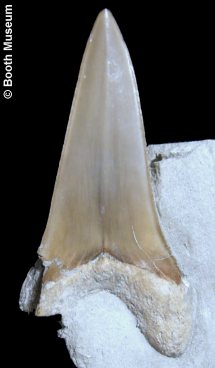 A A |
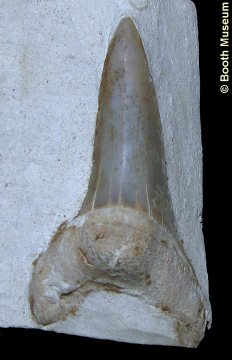 B B |
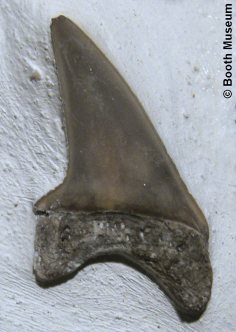 C C |
3). (A) Cretoxyrhina mantelli - Labial view of a large anterior tooth as indicated by the upright cusp (x2.6, Grey Chalk, Booth Museum, BMB 024327, by kind permission of John Cooper); (B) Cretoxyrhina mantelli - Lingual view of a large anterior tooth (x2.4, 'Middle' Chalk, Lewes, Willett Collection, Booth Museum, BMB 007313, by kind permission of John Cooper); (C) Cretoxyrhina sp. - Labial view of a lateral tooth with inclined cusp (x4.0, White Chalk, Booth Museum, BMB 024340, by kind permission of John Cooper).
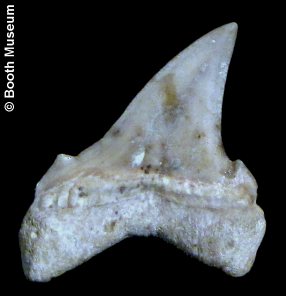 A A |
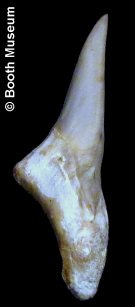 B B |
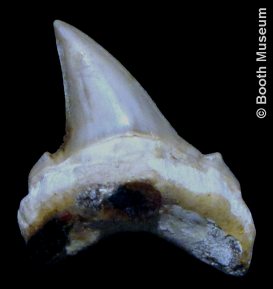 C C |
4). Cretoxyrhina mantelli: (A) Labial, (B) side and (C) lingual views of an isolated latero-posterior tooth. Note the characteristic flattened side profile with weak lingual protrusion. Weakly developed accessory cusps also (x3.0, Willett Collection, Booth Museum, BMB 007315, by kind permission of John Cooper).
5). Cretoxyrhina mantelli: A large association of variably intact teeth, presumably from a single individual (x0.8, White Chalk, Grays, Essex, NHMUK (British Museum (Natural History) London) PV P32346). Image © 2012 The Natural History Museum, by kind permission.
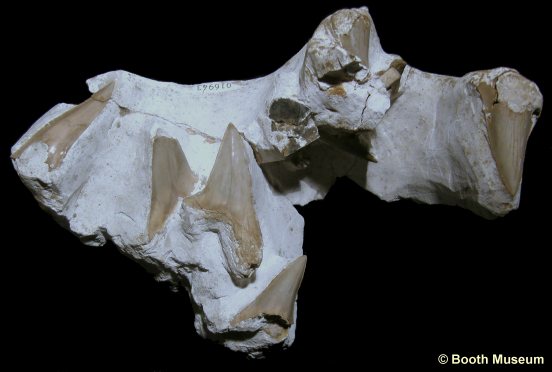
6). Cretoxyrhina mantelli - An association of large teeth, with further images of the association below (x0.8, Booth Museum, BMB 016943, by kind permission of John Cooper).
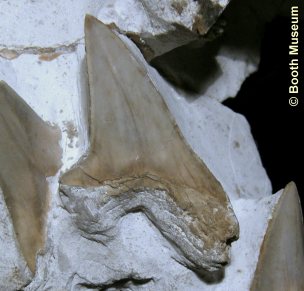 A A |
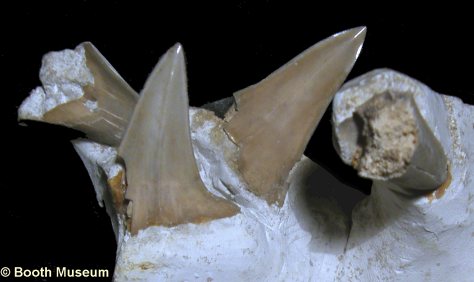 B B |
7). Cretoxyrhina mantelli: (A) Detail of the association abobe, showing a large lateral tooth (inclined and relatively broad main cusp) (x1.5, Booth Museum, BMB 016943, by kind permission of John Cooper); (B) An association of large anterior teeth (elongate, upright cusps)- seemingly a further part of the association figured above (x2.0, Booth Museum, BMB 016979, by kind permission of John Cooper).
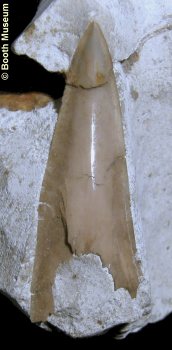 A A |
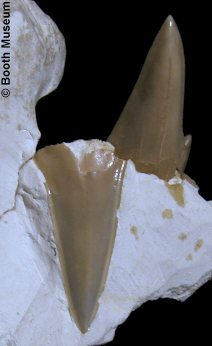 B B |
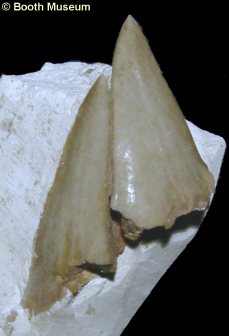 C C |
8). Cretoxyrhina mantelli - further images of large anterior teeth from the apparent association : (A) x1.8, Booth Museum, BMB 016943; (B) x1.8, BMB 016979; (C) x2.0, BMB 011264, by kind permission of John Cooper.
9). Cretoxyrhina mantelli: An association of large anterior teeth (x1.9, Chalk, Sussex, NHMUK (British Museum (Natural History) London) PV P1263). Image © 2012 The Natural History Museum, by kind permission.
|
|
|
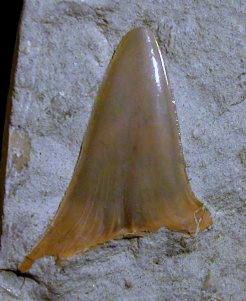 A A |
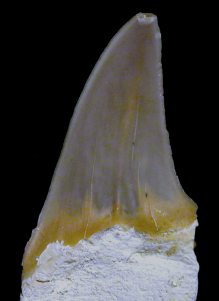 B B |
 C
C |
11). (A, B) Cretoxyrhina sp. - Lingual views of typical isolated cusps, lacking roots: (A) x2.9, West Melbury Marly Chalk, Glynde, near Lewes, Randell Collection RR0132; (B) x2.4, White Chalk, Randell Collection RR1487; (C) Cretoxyrhina mantelli - Lingual view of an isolated tooth, nestled amongst phosphatic clasts. Note weakly developed accessory cusp (x3.5, Totternhoe Stone, Zig-zag Formation, Grey Chalk, Barrington, Cambridgeshire, Randell Collection).